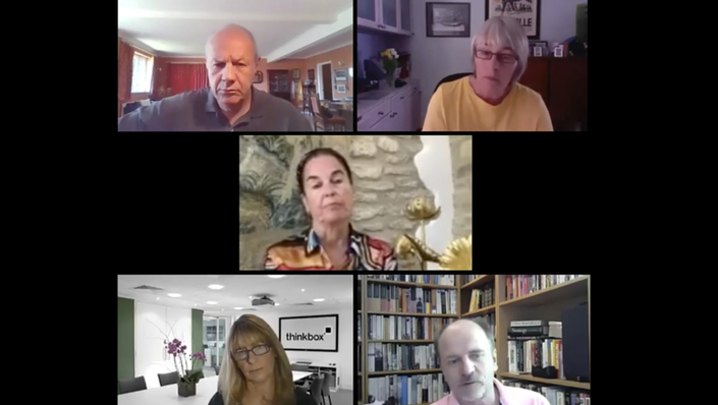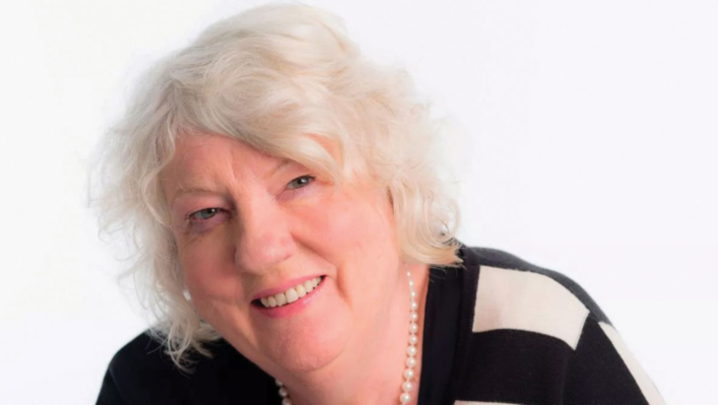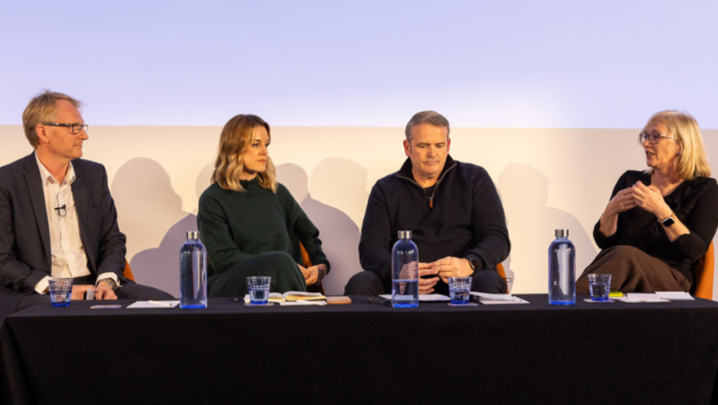Viewing of linear channels has surged in recent months, but the biggest victors are on-demand services such as Netflix.
Gifted a captive audience, television has seen its ratings soar during the coronavirus crisis. “People are spending much longer in front of TV sets,” Justin Sampson, CEO of ratings body Barb, told an RTS Zoom event in June. During the first nine weeks of the lockdown, people spent an average of five hours seven minutes in front of the box, a third more than during the same period in 2019.
Audiences are at “the kind of levels you’d normally see at Christmas”, added Sampson, who was one of a four-strong panel discussing TV viewing during the lockdown.
It is unsurprising that – confined to their homes – audiences have turned to TV for both news about the coronavirus crisis and respite from it. But, delve a little deeper into the stats, and far more interesting changes in viewing habits emerge.
Traditional TV is doing well – and perhaps better than many expected. A snap poll of the RTS webinar audience revealed that almost two-thirds thought that the most surprising viewing story to come out of lockdown was the rediscovery of linear TV.
Yet, viewing of Barb-reported channels, which includes the public service broadcasters but not “unidentified viewing” – the likes of Netflix and other SVoDs, gaming, YouTube and overseas satellite channels – has risen by only 18%.
Unidentified viewing, however, has increased to almost 30% of all TV set usage during the lockdown. “This is a significant step change in what was an increasing trend anyway,” said Sampson. Among younger viewers, unidentified viewing accounts for more than half of all their TV watching during lockdown.
Sampson said the rise in unidentified viewing had been “more significant than I would have estimated. From the data we’re starting to see, we think the SVoD services are instrumental in that.”
Given both the severity and novelty of a global pandemic, it is scarcely surprising that viewers have been glued to the news. “There’s an enormous amount of viewing of news programmes among older people,” said Sampson, “but there are some very encouraging growth figures in younger audiences.”
Coronavirus has brought back younger viewers to traditional TV, an audience that many media pundits thought had abandoned it for good. Digital UK, the organisation that runs Freeview, carried out a survey into attitudes to broadcasting a month into lockdown. “TV is still seen as the most important medium for information by all [age] groups,” said its CEO, Jonathan Thompson.
Public service broadcasting is highly valued, the survey found. “There had been this narrative emerging that anyone under 30 was completely disengaged with PSBs, but both the viewing behaviour during the lockdown and the attitudinal evidence we’re seeing in our research highlight that this is not true.”
Among 16- to 34-year-olds, he added, “two-thirds are saying that they are relying on the PSBs for news and information, and that they trust them much more than other providers”. The same group also values universality, with 90% supporting a “free TV service”.
“At the start of lockdown, people wanted trustworthy news sources,” said Martin Greenbank, head of advertising research and development at Channel 4. This view was “pretty much uniform” in a survey of some 1,200 people carried out by the broadcaster.
Greenbank revealed that “90% of the adult sample put TV as their number-one [source]. Newspapers were also important, but, way down the list, were Facebook and the social platforms.”
More than 50% of the young people surveyed said they “were aware of fake news stories circulating, predominately on social platforms. That is one of the reasons they [come back] to the PSBs.”
Greenbank said that Channel 4 News had “gone pretty much through the roof for all audiences”. In the 16-34 age group, he said, “it has doubled its reach”.
“Established” shows, he added, were doing particularly well: “Gogglebox is doing the biggest numbers it’s ever done, both on overnight and consolidated [figures].” Other programmes proving popular during the lockdown include The Great Celebrity Bake Off and Friday Night Dinner.
“At the BBC, we’re seeing record audiences in linear and across iPlayer,” said Rachel Shaw, the corporation’s head of content portfolio and audiences. “Since lockdown, we’ve seen 1 billion iPlayer requests,” she added. Initially, this was driven by people’s thirst for news; now drama is the spur, with Killing Eve and Normal People the most popular series.
People are watching TV in groups during the lockdown, said Shaw; previously, “co-viewing” was the preserve of big sporting events and entertainment show finales. Now, this extends to programmes “across the board”, including The Repair Shop and Normal People.
As with most industries, when the UK went into lockdown, TV production ground to a halt. With new programming at a premium, the number of repeats has grown steadily. The danger for the linear broadcasters is that, faced with reruns of shows they may not have much liked the first time around, viewers may switch off. The BBC’s Shaw admitted that scheduling was “going to be a tricky balancing act”.
A second poll of the RTS webinar audience asked which of the lockdown viewing trends would persist. The rise of the SVoD companies was thought most likely to continue, while the popularity of co-viewing was judged the least likely.
Looking to the post-lockdown broadcasting landscape, Barb’s Sampson hoped that young audiences would continue “relying on public service broadcasters for news”.
“For us, it’s a massive opportunity,” said Shaw. “Young people are coming back to the BBC in enormous numbers. It’s beholden on us to… offer them content that is meaningful to them.”
Channel 4’s Greenbank predicted a “period of consolidation” for SVoDs, arguing that consumers would not sign up for the all the new streamers coming on to the market. He predicted that they were more likely to “follow the content”, buying subscriptions to “dip into content” and cancelling them when they’ve watched it. “Businesses such as Netflix, that were built on a debt mountain, rely on the debt being serviceable in the longer term. I’m not sure the global economics of this are going to support some of these businesses.”
Digital UK’s Thompson added: “SVoD is not going away – it’s going to become a permanent feature of the market, but that was the case before the coronavirus crisis. It’s probably been nudged forward.” However, he argued that PSBs had natural advantages, such as offering live TV. “Linear is absolutely vital to its health, because [live TV] is the thing that Netflix doesn’t have.
“I hope all the PSBs remind themselves of the importance of their organisations to viewers.… One of the things they’ve done brilliantly is to respond quickly to events, to feel live and connected and part of the community, which is very hard for a Netflix to do as a global broadcaster.”
But it was easy to get carried away by the notion of a connected nation, keeping in touch via Zoom and bingeing on Netflix during the lockdown. Thompson pointed out that “20% of this country barely use the internet. For them, the BBC, ITV and Channel 4 are their main means of communication with the outside world, particularly at a time like this.”
The notion of “universality”, of “free, equal access” to television, he added, had “never been more important”.
Report by Matthew Bell. The RTS online event ‘Lockdown viewing’, held on 4 June, was chaired by the media commentator Kate Bulkley. The producers were Liz Reynolds and Keith Underwood.





